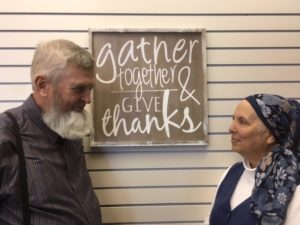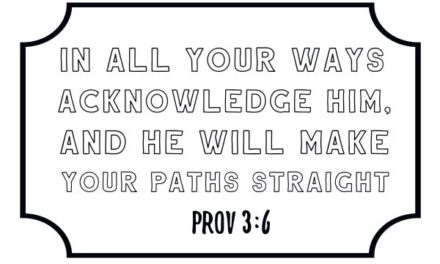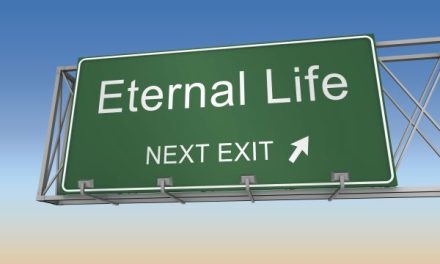Words and Pictures
By Jim Huskins
McDowell County
Ancient wisdom establishes word-to-picture equivalence at an astonishing one thousand to one. Most of us assume that the famous adage represents the unassailable victory of pictures over words. In fact, the opposite is true. The reason that a picture may provoke a thousand words is that pictures are woefully inefficient at conveying specifics. A masterfully executed picture may inspire powerful feelings, but pictures are lousy conduits of certain details. Part of the blame for a general decline in the mastery of the English language is widespread abuse of the word-to-picture ratio.
Late in the last millennium, my wife and I decided that if we wanted to keep in touch with our children, we had to learn to text. They seldom made phone calls, email was already passé, and postal mail was a relic of the murky past. I am a competent typist, but I text at a speed slightly slower than “plod.” Despite my text-speed deficiency, I have never been tempted to replace words with little pictures. Those who do so invoke a conundrum inherent in the word-to-picture ratio—no two people have an identical understanding of most pictures.
This situation can be verified by consulting published definitions of “emoticons.” So-called experts in this field cannot even agree on the subset of little pictures which represent facial expressions. If those in the know do not know, then how are the rest of us supposed to understand what someone is trying to say with a little picture?
One ubiquitous image in texting is that of a hand with four closed fingers and a thumb extended upward. Apparently, this can mean “I agree,” “I feel good about that,” “I’ll be there soon,” “that’s a good course of action,” “that is going to happen,” or “it’s already in process” and more. How am I supposed to know what the sender intends? This picture is further complicated by the fact that many cultures view that hand position as an insulting, obscene gesture. It also refers to a procedure for which we use toilet paper. When I trained for an African mission trip, we were told to never make that gesture.
Since humans are unable to convey thoughts directly, we have no choice but to communicate through symbols. Any symbol, including words, can be misunderstood. The difference between words and pictures, however, is that entire cultures tend to agree on the definitions of words and record those definitions in readily-available format. Pictures are seldom endowed with equivalent shared understanding. One can choose to communicate with pictures, but in so doing, one also chooses to be misunderstood.
Only God is capable of direct communication. The inspired, prophetic utterance is the source of that marvelous collection of symbols that we call the Bible. God’s Word is echad. This Hebrew term refers to an inseparable unity. The Father, Son, and Holy Spirit are echad. The Bible is one story delivered by the One True God through the one group of people that He chose to be His one holy possession—the Nation of Israel. We do violence to the Bible when we rip it out of its Hebrew context and attempt to force it through the filter of modern, Western culture. The only way to understand that remarkable stream of powerful symbols delivered through the Hebrew Prophets is to approach the book through their worldview.
Soon after I began the process of attempting to better understand the Bible’s context, I was delighted to learn that the ancient Hebrew alphabet is made up of—wait for it—little pictures! The first letter, aleph, is the head of an ox. The second letter, bet, is a picture of a tent or house. Gimel is a stick figure of a camel. Dalet is a picture of a door. All 22 of the Ancient Hebrew alphabet characters are simple but profound pictures. Those little pictures are delightful because, unlike the modern plague of emoticons, each picture in the Hebrew alphabet is well defined and clearly understood. The ox represents strength and leadership. A tent is both a dwelling and the family that lives within it. The camel represents something being lifted up as a rider when his mount rises from its knees. The door symbolizes a path or a way of life.
Our Father understands that we can only connect to truth through symbols that our brains can accurately process. That’s why the building blocks of His Holy Word are simple, powerful symbols. The pictures which make up the conduit through which God communicates His marvelous love do not bog down in thousands of words. Each of them rests firmly on a few, well-chosen words that are easy to understand.
Too many Christians have too long been fed the lies that God changed, that all the “old testament stuff” is no longer relevant, and that the “grace of Jesus” gives us a license to live any way we like. The big picture presented in Scripture is fundamentally at odds with the pinhole perspective of modern theology. Hebrew world view recognizes that God never changes, that His instructions for living are for all times, places, and people, and that we will all be judged in the end based on what we have done rather than what we claim to “believe.” God is holy, and we can only approach Him by respecting and imitating His holiness. “You shall be holy for I am holy.” (1 Peter 1:16)
God expects—and is entitled to—more from us than merely walking an aisle and repeating a made-up prayer. The only way to know and love Him on His terms is to lay aside the false images we have been taught, pick up His Book, and read from the beginning with an open mind and a tender heart. The Bible is many thousands of words, but they all point to the One picture of Him who still proclaims, “Behold, I stand at the dalet and knock.”
__________________________________________________
Jim & Beverly Huskins are members of Obedient Heart Fellowship in McDowell County. You can read more good Christian news from Jim HERE.
__________________________________________________







